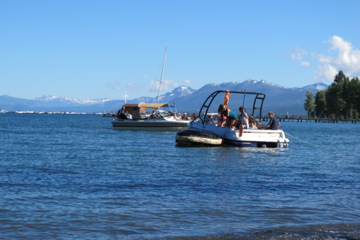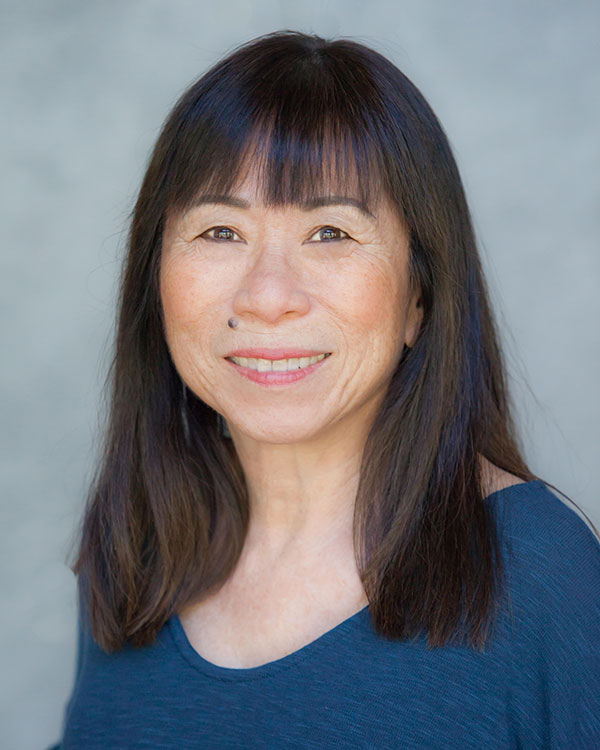The History of Carnelian Bay

The Lake Tahoe neighborhoods that make up Carnelian Bay and Agate Bay are rich in history. Each is named after the agate and translucent, red and yellow carnelian stones, once found on the shores in abundance.
Dating all the way back to the Egyptians, these semi-precious stones are used for healing and spiritual purposes. Also called cornelian stones, according to the book, California’s Geographic Names, Carnelian Bay was originally called Cornelian Bay. The Cornelian Bay Post Office operated from 1883 to 1893. Subsequently, the name of the town was changed to Carnelian Bay.
Hunting for Carnelian Stones
The brownish-red minerals that make up carnelian stones combine a variety of a cryptocrystalline silica, colored by iron oxide. These semi-precious, quartz stones range in color from yellow-orange to reddish-orange, and to a deep red-brown. Stones can be either translucent or semi-opaque.
Hunt for these stones during the early morning or late afternoon, when the rays of light slant across the rocks. They will stand out because of their translucence or waxy color. You can find them after a heavy rain or pounding surf, when the stones are turned over and brought to the surface. When the surf is up at Lake Tahoe, plan an early morning hunt for semi-precious stones.
Hunting for Agate Stones
Agate stones are iron-red rocks that have concentric banding and colorful lines. The surf washes them over time until they become more translucent. Some are dull, while others have a waxy luster. When the sun is low, either early morning or early evening, you can use a flashlight to reflect any stones that are translucent. These red-shimmering stones are more noticeable from a distance.
History of Carnelian Bay
The Washoe Indians lived in the Sierra Nevada area of Lake Tahoe 6000-9000 years ago. Carnelian Bay was a popular fishing, and hunting area for Native Americans. Carnelian Bay had many natural springs, ponds and wetlands that attracted wildlife.
Train travel and freight service to and from Truckee began when the Central Pacific tracks reached Truckee in 1867. The Central Pacific and Union Pacific met at Promontory Point, completing the Transcontinental Railroad in 1869. A trip from Chicago to San Francisco that had taken months by wagon could now be completed in seven days by rail.
The Booming North Shore of Lake Tahoe
Once Truckee became more easily accessible, it opened Lake Tahoe to more than just mountaineers. Visitors were drawn to the rarified air and the hot and cold mineral springs located on the North shores of Lake Tahoe.
In 1869, a stage operator and Truckee sawmill entrepreneur came together to grade a road near what is currently route 267. Billy Campbell and George Schaeffer built a wagon route through Martis Valley, over Brockway Pass and to the Lake Tahoe hot springs called Brockway Hot Springs. Campbell owned 63 acres of land surrounding the hot springs. He had erected several cottages near the mineral springs and began accommodating tourist traffic. His Warm Springs Hotel was one of the first commercial resorts at Lake Tahoe.
Dr. George Bourne had several health clinics in Sacramento and San Francisco. In 1871, he opened Dr. Bourne's Hygienic Establishment in Cornelian Bay. Nearby, at Brockway Hot Springs, Billy Campbell and Henry Burke were successfully developing the Warm Springs Hotel. They featured a 20 foot square bathhouse over the mineral spring that boiled out of a large rock in Brockway.
Naming Lake Tahoe
Dr. Bourne too, saw the healing benefits of attracting visitors to the North Shore of Lake Tahoe. He sold a ‘water cure’ in the warm wetlands and cold lake waters surrounding Carnelian Bay. By 1874, health seekers flocked to Dr. Bourne’s spa, which he had re-christened the “Cornelian Bay Sanatoria.” He actually tried to change the name of Lake Tahoe to Lake Sanatoria. Luckily, the idea didn't gain any traction.
In 1844, when John C. Fremont first saw Lake Tahoe from Carson Pass, he named it Lake Bonpland after a botanist. The name was changed to Mountain Lake, then Lake Bigler, after a California Governor. The US Department of Interior commissioned Dr. Henry Degroot to name the lake, and he suggested “Tahoe.” Tahoe was an Indian word meaning “big water.” Because it took decades for the California State Legislature to take action in naming the lake in 1945, the name of Lake Tahoe was always changing.
Transportation Around Lake Tahoe
The only way around Lake Tahoe during the late 1800’s was by steamer. Brockway and Carnelian Bay were stopping points from Tahoe City. In 1876, the Cornelian Bay Hotel had become a regular stop for the Governor Stanford steamer. Guests would hunt for semi-precious agate and carnelian stones, and stopped in at Dr. Bourne’s for his famous water cure.
In 1889, a stage and wagon road was built between Tahoe City and Brockway Hot Springs, stopping in Carnelian Bay and making the area accessible by land. In 1899, a small railroad called the Lake Tahoe Railway and Transportation Company began running from Truckee to Tahoe City along what is now Highway 89. A trip from San Francisco to the North Shore of Lake Tahoe could now be accomplished with relative ease.
The North shore of Lake Tahoe became a wellness seeker’s paradise.
The Hermit of Carnelian Bay
Dr. Bourne lived year round at Lake Tahoe and during winter, he lived alone, like a hermit in his cabin, “Castle Keep.” He measured snowfall, rain and kept other environmental records that we still have today. Two steamers continued to trek across the lake during the winter, bringing him provisions. When he died in the 1880s, James Cleland acquired most of his holdings, which included the doctor’s sanatorium.
A few years later, the Flick brothers purchased Cleland’s frontage properties, which included the hotel, a post office, general store, cottages and a wharf. There is a still a lakefront neighborhood called Flick Point, located just North of the Old Post Office café in Carnelian Bay.
In 1909, the Flick brothers sold their lakefront property to allow for the development of Carnelian Bay as a summer residence resort. The homes in the Carnelian Bay subdivision boasted piped in water from a mountain spring in the hills above. When the upscale neighborhood of Brockway Hot Springs was launched in the 1990’s they boasted the same spring water access.
Tahoe Country Club
Marketed as the Tahoe Country Club, the 81-acre Carnelian Bay resort included small and inexpensive lots that were sold to the average, middle class buyer. One needed only to promise they would promptly build a house, cottage or bungalow on the lot. The prices ranged from $125 for a lakeview lot, to $400 for a lakefront property.
75 lots sold quickly and by 1914, the Carnelian Bay neighborhood had more than 45 homes. Homes boasted easy lake access, surrounded by wetlands. The developers had planned to dig an inland harbor and build a hotel and subsequently, landfill was added. While the Country Club concept never gained traction, folks continued to build cabins and cottages that became the neighborhood of Carnelian Bay.
Return of the Wetlands
By the 1990’s, conservation efforts to retain the lake’s clarity involved projects to return the natural wetlands and ponds to Carnelian Bay. To reduce sediment before it entered the lake, these wetlands and ponds were extremely important in retaining the clarity of Lake Tahoe. Development within the Tahoe Basin had destroyed more than 75% of the original wetlands.
In Carnelian Bay, they removed several thousand yards of landfill that had covered the historic wetlands. Later excavations exposed the rich native soil below. The surrounding land was carefully graded to resemble a more natural wetland. During the spring runoff, the small basin’s ponds fill with water and provide habitat for waterfowl and wildlife before drying out by summer into a meadow. Wetland plant species have returned to reestablish a functioning meadow environment.
Carnelian Bay offers many of the original charming old Tahoe cabins and a few with modern, lakefront architecture. The natural wetlands, trails and forests surround the homes. Many homes have lake views or are lakefront properties. The original post office was converted into a cozy restaurant, perfect for breakfast and lunch. Garwoods Restaurant in Carnelian Bay has become iconic for charming lakefront dining.
Things to Do in Carnelian Bay

Locals and visitors enjoy CB’s Pizza for casual dining, or Gar Woods Grill & Pier Restaurant on the Lake for fine lakeside dining. Garwoods has a banquet facility for weddings, private parties, and other events.
Home of the annual Concours D’Elegance Boat Show held at the Sierra Boat Company in Carnelian Bay, they offer a full-service marina. Pattons Landing Beach and Carnelian Bay Beach are local picnic spots with nature walks and beach access. These are great areas to hunt for semi-precious stones.
Pattons is dog friendly, offers kayak and paddle board rentals, and has a lakeside rentable building with an enclosed patio that is also a perfect site for events. The Magic Carpet Golf course has a mini course filled with storybook creatures, giant dinosaurs, and an oversized volcano.
Close to Carnelian Bay is the nine-hole Old Brockway Golf Course, designed by renowned Scottish architect John Duncan Dunn. Golf Today magazine rated Brockway Golf Course in the top ten for California courses. It was the location of the first Bing Crosby Golf Tournament from 1934 to 1935. Many stars of the 1940’s including Frank Sinatra and Dean Martin, golfed at this golf course.
Winter sport enthusiast will enjoy access to nearby resorts, including Northstar-at-Tahoe, Alpine Meadows, Diamond Peak, Homewood, and Mt. Rose. For endless summer and winter activities and all that Lake Tahoe has to offer, Carnelian Bay offers everything.
I specialize in lakefront homes and in representing Carnelian Bay and Agate Bay homes for sale. Contact me today to learn more about available listings or for a no obligation property analysis on your home. I'd love to show you why I love North Lake Tahoe!

 Trudi Lee has been selling and listing residential real estate at North Lake Tahoe for over 30 years. Her real estate philosophy maintains a meticulous attention to the needs of her clients…
Trudi Lee has been selling and listing residential real estate at North Lake Tahoe for over 30 years. Her real estate philosophy maintains a meticulous attention to the needs of her clients…